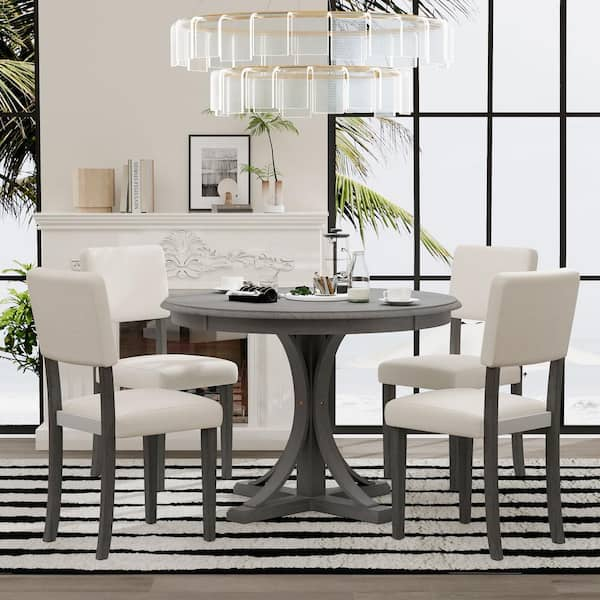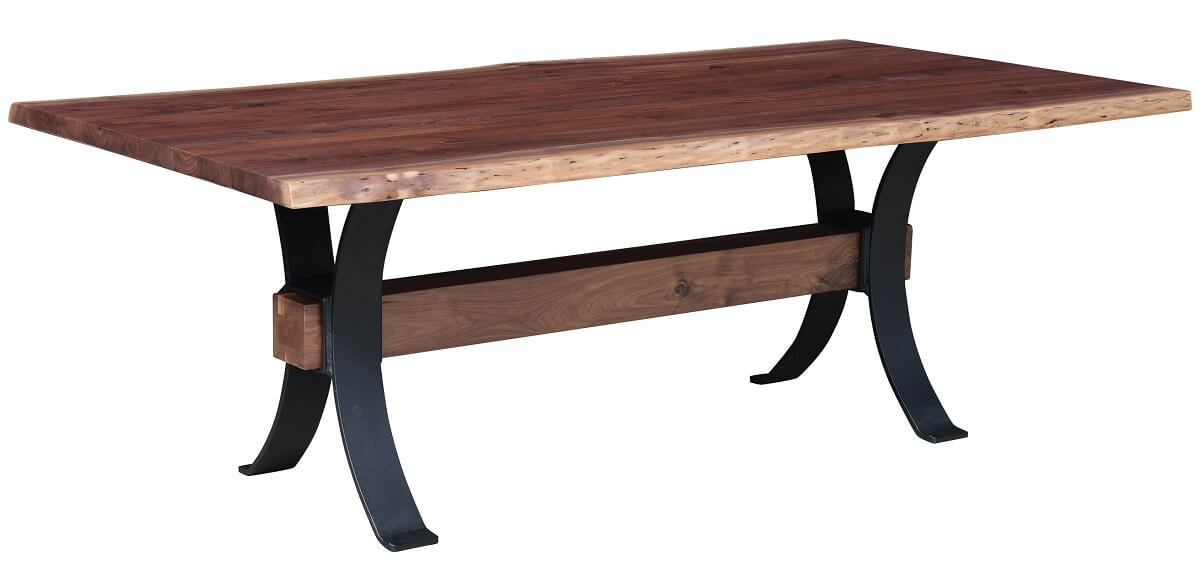Creative Ideas for Replacing or Refurbishing Your Dining Room Table Legs
Wiki Article
From Standard to Modern: Discover the Ideal Dining Room Table Legs for Your Design
While traditional designs such as cabriole and turned legs evoke a feeling of timeless class, modern designs like barrette and geometric alternatives provide a chance for striking aesthetic interest. As you think about these elements, the inquiry continues to be: just how can you effortlessly integrate these varied leg designs to develop a harmonious eating experience?Comprehending Table Leg Styles
The variety of dining-room table leg styles can significantly influence both the appearances and capability of the space. Each leg design adds unique aesthetic aspects and useful attributes, catering to varied layout choices and usage requirements. Recognizing these designs is essential for picking the ideal table that lines up with your general interior decoration vision.For example, conical legs provide a tidy, traditional look that can enhance an area's elegance, while stand bases supply security and make best use of legroom, making them perfect for smaller rooms. Hairpin legs, a trademark of mid-century modern layout, introduce a commercial flair, permitting a ventilated, open feeling. Likewise, trestle legs stimulate rustic charm, giving robust support and a sense of timelessness.
Additionally, the selection of materials plays a considerable duty. Wooden legs can bring heat and structure, whereas metal options frequently convey a sleek, modern ambiance. Inevitably, understanding table leg designs is necessary for producing a cohesive eating location that mirrors individual style while ensuring usefulness and comfort. By thoughtfully considering these aspects, you can boost both the practical and visual allure of your dining area.
Traditional Table Leg Options
When choosing eating area table legs, traditional choices usually symbolize ageless sophistication and craftsmanship. These designs show an abundant heritage and a commitment to quality, making them ideal for those that value traditional aesthetic appeals.Among one of the most legendary traditional leg styles is the cabriole leg, characterized by its graceful curved shape. This design typically includes ornamental makings and is most frequently located in Queen Anne and Chippendale furnishings. One more prominent choice is the turned leg, which boasts a series of smooth, rounded shapes that provide a timeless appearance while preserving stability.
Additionally, the straight leg, while easy, provides a unadorned and sturdy structure that can blend seamlessly with a variety of tabletop designs. For those attracted to ornate describing, claw-and-ball feet legs stimulate a sense of magnificence and can serve as a magnificent focal point in any dining space.
Lastly, pedestal bases, although not strictly legs, supply an alternative standard choice that enables sufficient legroom and can be magnificently carved. Each of these conventional leg styles adds to the total setting of an eating area, weding feature with visual allure.

Modern Table Leg Layouts
Modern table leg designs offer a varied variety of designs that emphasize tidy lines and ingenious products. These designs often focus on functionality while working as striking prime focus within an eating space. Minimalist visual appeals are widespread, with legs crafted from materials such as steel, glass, and engineered wood, which add to a contemporary and ventilated feel.One preferred design is the barrette leg, identified by its slender, conical framework that provides security without frustrating the tabletop (dining room table legs). This style is usually found in mid-century modern-day furniture and can effortlessly match numerous table shapes. An additional trend is the use of geometric forms, where legs might take on angular or unbalanced types, including aesthetic interest and a touch of creativity

Mixing Designs for One-of-a-kind Rooms
Often, homeowners seek to develop one-of-a-kind eating areas that show their personal style by mixing numerous style aspects. This method allows for the incorporation of varied aesthetics, causing an unified yet unique environment. For example, combining a rustic wooden table with sleek, contemporary metal legs can develop an eye-catching comparison that raises the room's general appeal.Additionally, incorporating vintage table legs with contemporary table tops can evoke a feeling of history while maintaining a contemporary sensibility. Such mixes not only display individual preference but likewise encourage imagination, allowing house owners to curate a space that really feels both individual and inviting.
Shade plays an important duty in this blending procedure; selecting table legs More Bonuses that match or comparison with the existing color design can boost visual passion. As an example, whitewashed legs can soften the daring of a dark table surface area, creating a well balanced visual.
Tips for Picking the Right Legs
Selecting the right table legs is necessary for achieving both performance and aesthetic allure in your dining room. Begin by taking into consideration the general design of your room. Conventional setups gain from legs that feature elaborate makings or transformed layouts, while contemporary spaces might ask for sleek, minimal designs.Following, assess the height and stability of the legs. dining room table legs. Common table vary in between 28 to 30 inches in height, so guarantee the legs match this measurement for convenience. In addition, durable products, such as hardwood or metal, can enhance stability and longevity
Assess the leg shape Look At This also-- choices include directly, tapered, or pedestal styles. Straight legs use a traditional appearance, while conical legs can include a touch of sophistication. Pedestal bases supply enough legroom and are ideal for smaller sized rooms.
Verdict
In summary, picking the excellent eating area table legs calls for mindful factor to consider of both modern and traditional designs. By harmonizing leg design, height, and product with the general decoration, a natural and inviting ambience can be accomplished.The variety of eating room table leg designs can considerably affect both the appearances and performance of the room. Eventually, understanding table leg styles is important for developing a natural eating area that shows personal style while making Continue certain functionality and convenience.One of the most legendary traditional leg designs is the cabriole leg, characterized by its stylish curved shape. Straight legs supply a classic look, while conical legs can add a touch of sophistication.In recap, selecting the suitable dining space table legs calls for careful consideration of both contemporary and standard designs.
Report this wiki page